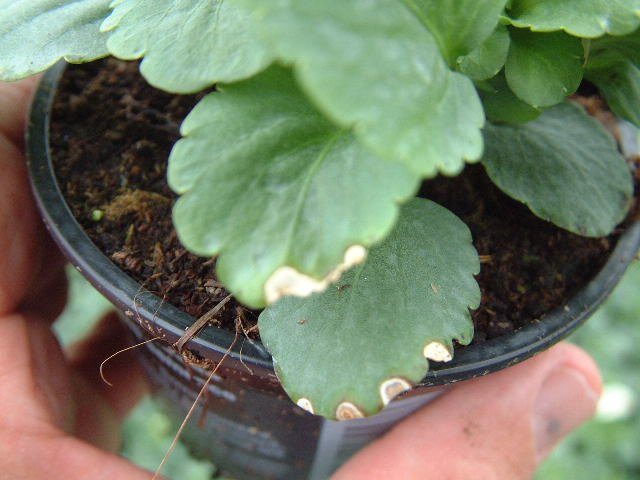Spotlight on leaf spots
As well as Botrytis, mildews and rusts, which we’ve looked at over my last three blogs, there are other, less well-known pathogens that can damage leaves, stems and flowers in autumn and winter, particularly on crops such as pansy, primula and polyanthus.
Leaf spots can be caused by several kinds of fungi. Precise diagnosis can be tricky as symptoms vary depending on the crop and pathogen involved, with more than one type of fungus sometimes present.
Generally, though, you’re looking for small, dark, distinct spots, usually on older leaves first but spreading to younger foliage if the infection takes hold.
On pansy, small purple-brown spots with a slightly greasy appearance are probably the result of Ramularia lactea; tan-coloured spots that merge into areas of scorched-looking tissue are more likely R. agrestis.
Alternaria violae infections on cineraria lead to irregular dark brown to black spots; on other crops, the leaf spots tend to be greenish-yellow or buff.
All the good husbandry that we have talked about to manage Botrytis, mildews and rusts – such as adequate ventilation and humidity control, appropriate plant spacing and avoiding prolonged leaf wetness – will go a long way to prevent these other leaf spot diseases too.
Broad-spectrum spray programmes including Switch (on-label authorisation for use on ornamentals) and Amistar (under an EAMU), used together with products with alternative modes of action (including some biofungicides) in a resistance management strategy, can offer protection against a range of fungal leaf spots.
A word on bacteria
Some leaf spots are the work not of fungi but of bacteria. It’s important to recognise the difference because, although some fungicides offer some incidental suppression of bacterial plant pathogens, nothing is available specifically to control them. Some also cause notifiable diseases.
Pseudomonas or Xanthomonas species are the most common bacteria causing leaf spots and blights and are spread in water droplets.
Pseudomonas leaf spots are usually dark brown to black, with ‘water-soaked’ edges where dead cells have leaked; the infected area then dries and becomes papery. P. viridiflava and P. syringae are most likely encountered on primroses, leading to yellow-rimmed brown spots. Pseudomonas can cause disease at relatively low temperatures, around 15°C, and is favoured by humidity and leaf wetness.
The irregularly shaped spots produced by Xanthomonas infections tend to be dry and ‘corky’, although not always. Symptoms on ivies are typically irregular black spots with a yellow edge. On begonia, X. axonopodis pv. begoniae appears initially as small water-soaked spots at the margins of older leaves. On lavender, infections of X. hortorum – first identified only a few years ago in AHDB-funded work – take the form of leaf spots and shoot blight.
Where the crop mix includes cyclamen, growers need to be vigilant for Pectobacterium carotovorum, a bacterial soft rot in the top of the corm which often starts after the corm has been damaged, by sciarid fly larvae feeding, for instance, or where too-fast growth leads to the corm cracking. It can also infect other crops including pelargonium, poinsettia, primrose and viola.

Preventive measures: Start with healthy propagation material; good suppliers should be able to certify seed has been tested or cuttings originate from disease-free stocks. Bacteria are easily transmitted on hands and tools so supply staff with hand gel to use between crop batches, and make sure knives and secateurs are regularly disinfected.
Effective control of insect and nematode pests will help, reducing potential entry points.
Monitor and treat any irrigation water collected from greenhouse roofs or that is recycled; and manage nutritional regimes to avoid soft, lush growth that’s an easy target for bacteria.
Any infections you identify need to be dealt with quickly – remove and dispose of infected plants and treat the area with an approved disinfectant biocide.
All the cultural measures we have already discussed to manage fungal foliar diseases are just as effective at reducing the risks from bacteria.

